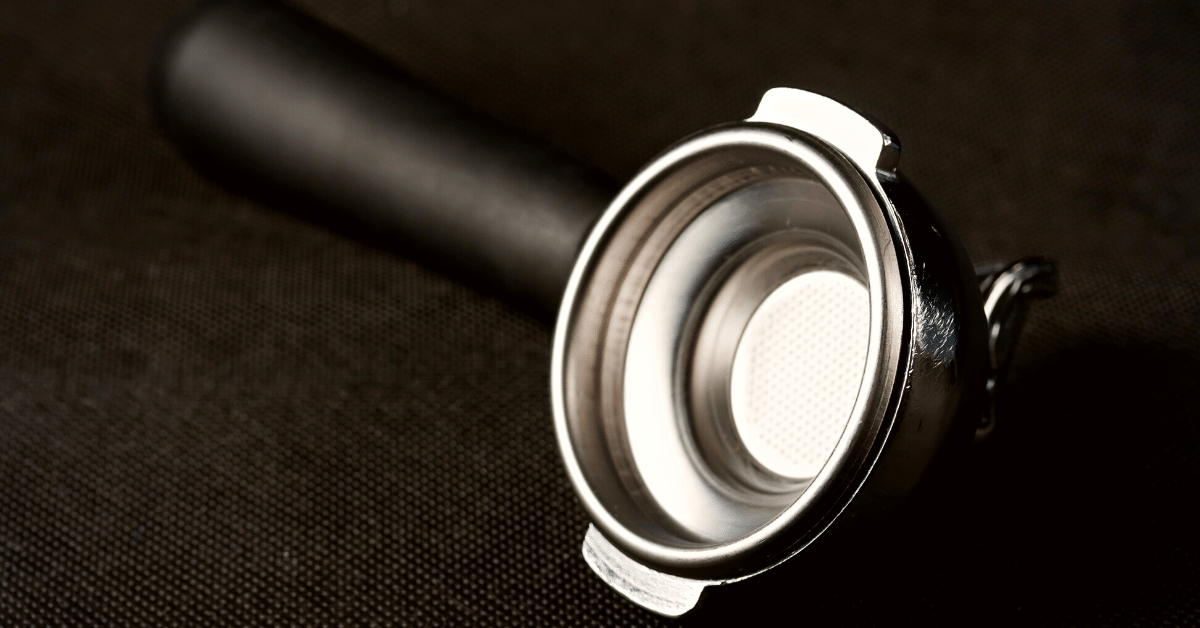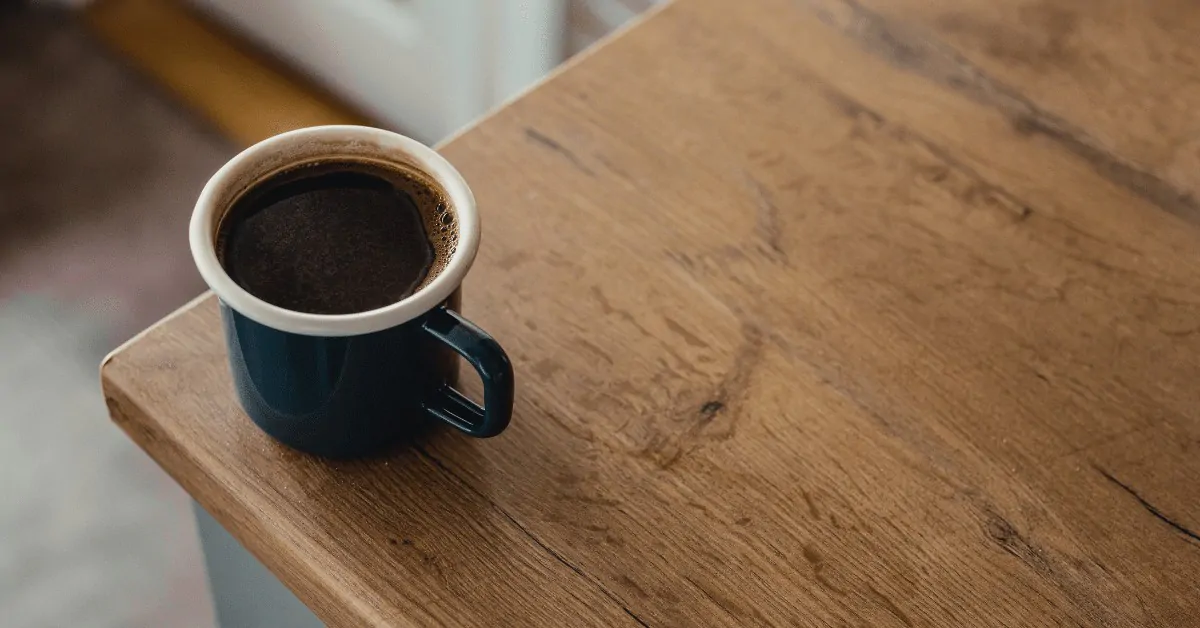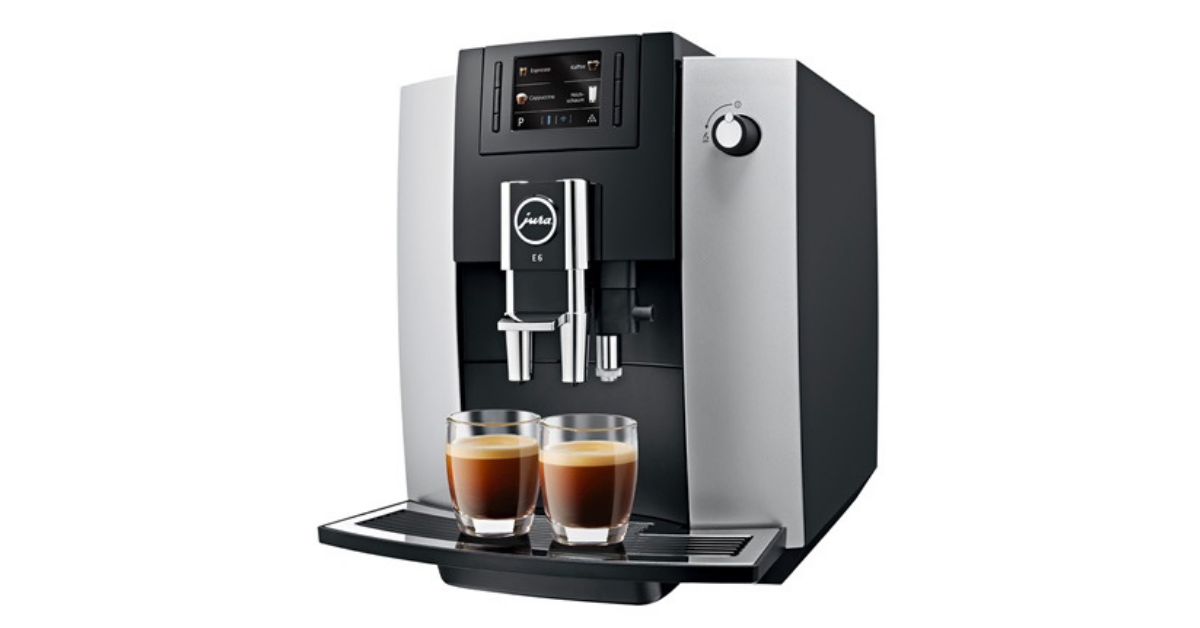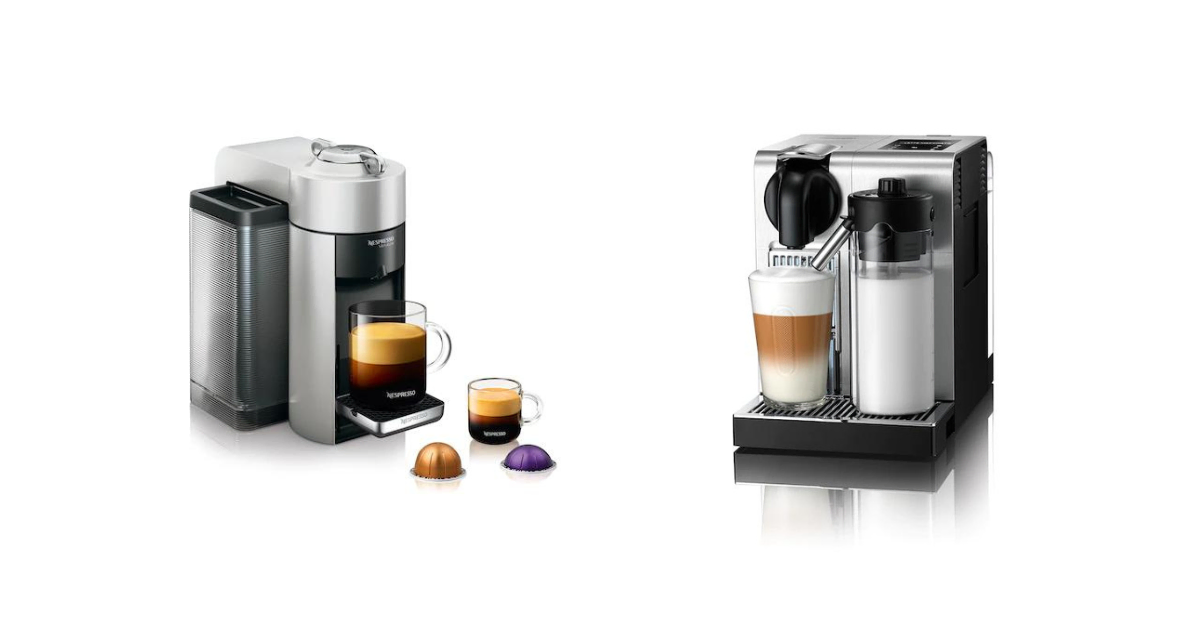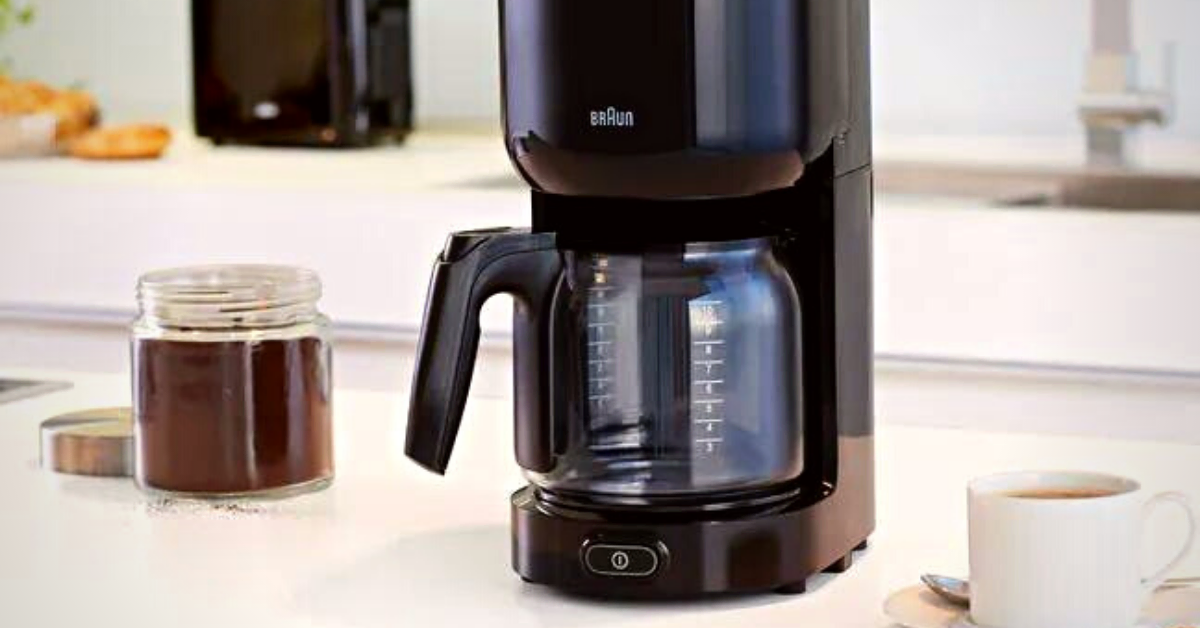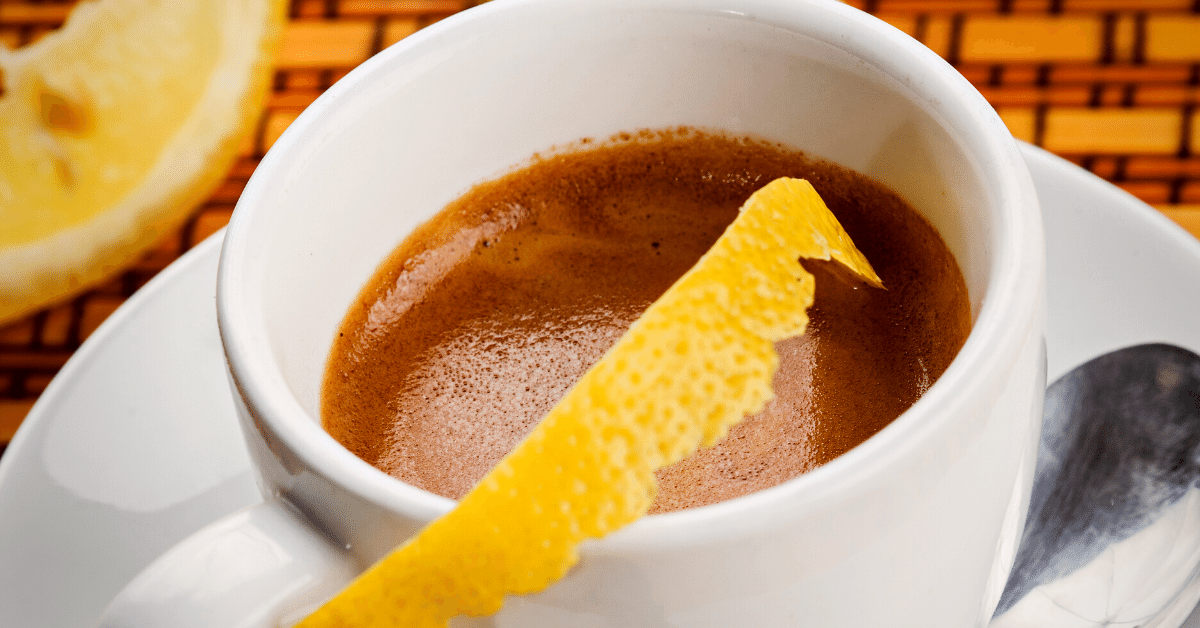Pressurized vs non-pressurized portafilter – which one to choose? Learn the differences between these so you can choose the best one for you.
Pressurized vs non pressurized portafilter – what’s the difference?
Pressurized portafilters are generally easier to use and more forgiving. But it doesn’t taste quite as good.
Non-pressurized baskets are harder to use but produce better espresso.
In this article, let’s take a deeper dive into the world of portafilters.
Let’s get to it!
Let’s Chat About Pressurized Portafilters

A pressurized portafilter is also called a double-walled portafilter. This kind of filter basket essentially has two bottoms.
The inner one is full of holes, and the outer one has only a handful (or often just one).
The two walls in these portafilters make it easier to build pressure in the filter basket itself.
When brewing espresso, you need to build up about 9 bars of pressure. That’s the minimum to create that classic silky espresso with good crema. Nine bars of pressure means 9 times atmospheric pressure. In other words, a lot of pressure.
With pressurized portafilters, the espresso maker doesn’t have to work as hard. Instead, the basket helps to create pressure inside the portafilter.
Using pressurized portafilters also means you can use a coarser grind. Because of the dual walls, you don’t need to use the coffee grind size to change the pressure built up in the basket.
That’s another reason a lot of consumer espresso machines use pressurized portafilters: most people don’t have espresso grinders. They have to make do with either pre-ground or coarsely ground coffee.
BOTTOM LINE
Pressurized portafilters are double-walled portafilters. The first wall has a number of holes, the outer wall has only a couple or only one. They build up pressure in the portafilter even with the coarse coffee ground and are easier to use for beginners.
A Quick Overview Of Non-Pressurized Portafilters
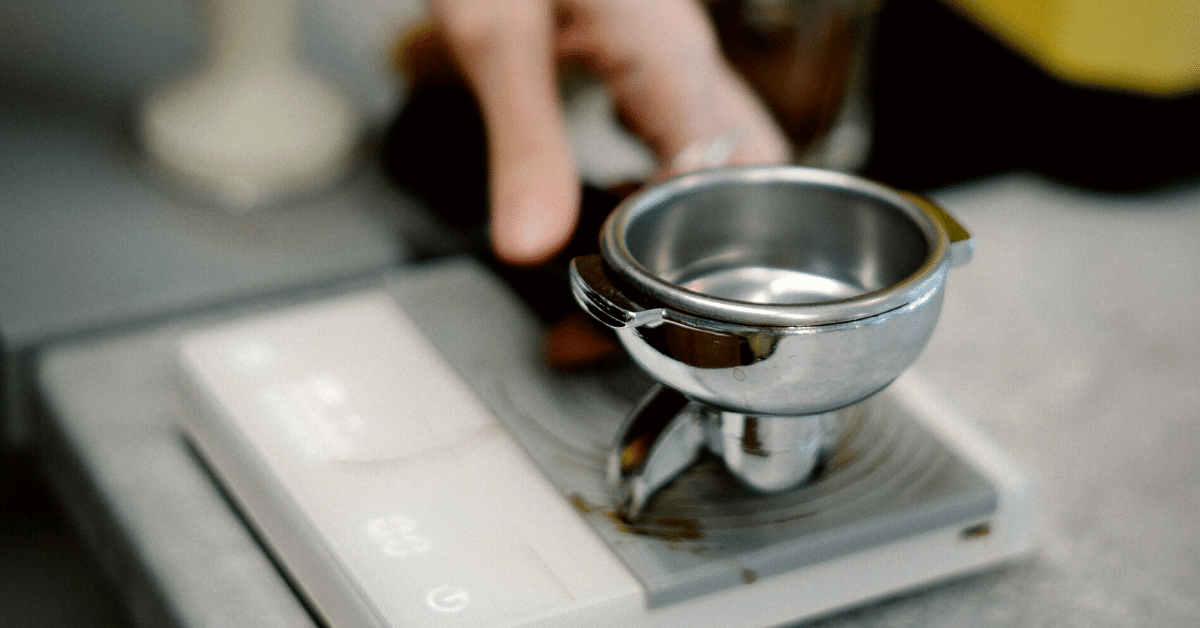
Non-pressurized portafilters are sometimes called single-walled or bottomless portafilters.
What that means is that the bottom of the non-pressurized only has one wall that is full of a number of holes.
So, to brew espresso, you need to use a finer grind, and a harder tamp. That’s so you can build up the same amount of pressure as you would in a double-walled portafilter.
You do get more control over your extraction with a non-pressurized portafilter. That’s because the amount of pressure, the tamp, and the grind size all make a bigger difference.
These bottomless filters have a pretty steep learning curve to them.
You’ll need to understand the basics of espresso extraction. And you’ll need to know how changing variables change the taste of your espresso.
I don’t bring that up to dissuade you from choosing a non-pressurized portafilter. You should just be aware that you’ll need some practice to perfect using a bottomless basket.
BOTTOM LINE
Non-pressurized portafilters have a steeper learning curve. They are better for people with basic extraction and espresso training. They need pressure built up from a harder tamp and a finer grind. They will give you better espresso overall.
Pressurized And Non-Pressurized Portafilters: What’s The Difference?
Let’s take a closer look at how these two portafilter types stack up against each other.
There are a few big differences that might help you choose between them.
How do they work?
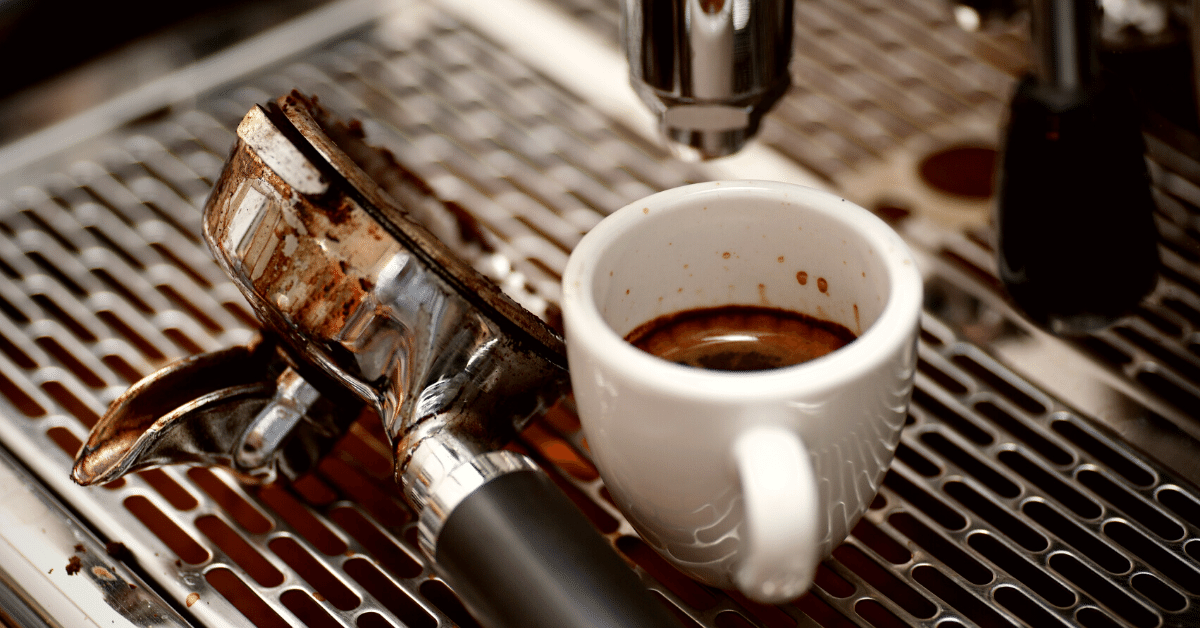
The actual function of the two filters is drastically different.
In a pressurized basket, there are two screens. The first has a lot of tiny holes that look like a non-pressurized portafilter basket. The second screen only has one or a handful of holes.
The space between the screens is where pressure builds up. Eventually, coffee gets forced through the second screen.
Because the pressure is built up after most of the extraction has taken place, you don’t get as good of an espresso.
That’s because most of what makes espresso good is the extraction of oils when pressure builds up. Those oils are what make up the crema of a good espresso.
Pressurized baskets usually don’t have a good crema.
They are more common on less expensive machines that can’t generate enough pressure.
Non-pressurized portafilters only have one screen that has a lot of tiny holes. The pressure that builds up in bottomless baskets is all due to the grind size and tamp.
To get enough pressure for good extraction, you need a finer grind and a harder tamp to create resistance.
So, you need to have some basic espresso training. Or you’ll need the willingness to learn about properly pulling an espresso shot to find good results.
Bottomless portafilters are more common in higher-end and commercial-grade espresso machines.
IN A NUTSHELL
A pressurized portafilter basket has two screens that help build up pressure. Non-pressurized ones only use the grind size and tamp to build up pressure.
What does the coffee taste like?
Personally, I prefer espresso made with non-pressurized portafilters.
Why is that? Well, because the oils and coffee extract are better with bottomless baskets.
While you do need to know what you’re doing, bottomless baskets have a much higher potential.
You’ll get a true crema, a thicker mouthfeel, and a smoother finish. You’ll be able to taste the coffee’s unique flavors. From single-origin to blended coffees, you’ll get better profiles.
With a pressurized filter basket, most of the extraction happens before the pressure builds up. So that means that you’re left with a strong coffee without the oils that make up a cafe-style espresso shot.
Think AeroPress or French press-style coffee.
Have you ever wondered why it’s so hard to make latte art at home? A big reason might be that you’re using a pressurized portafilter and don’t have a good cream because of that.
BOTTOM LINE
Espresso made with a single-walled basket is thicker and smoother. They taste more like cafe-style espresso shots. Pressurized baskets create a thinner coffee, more like an AeroPress or French press.
What do they do?
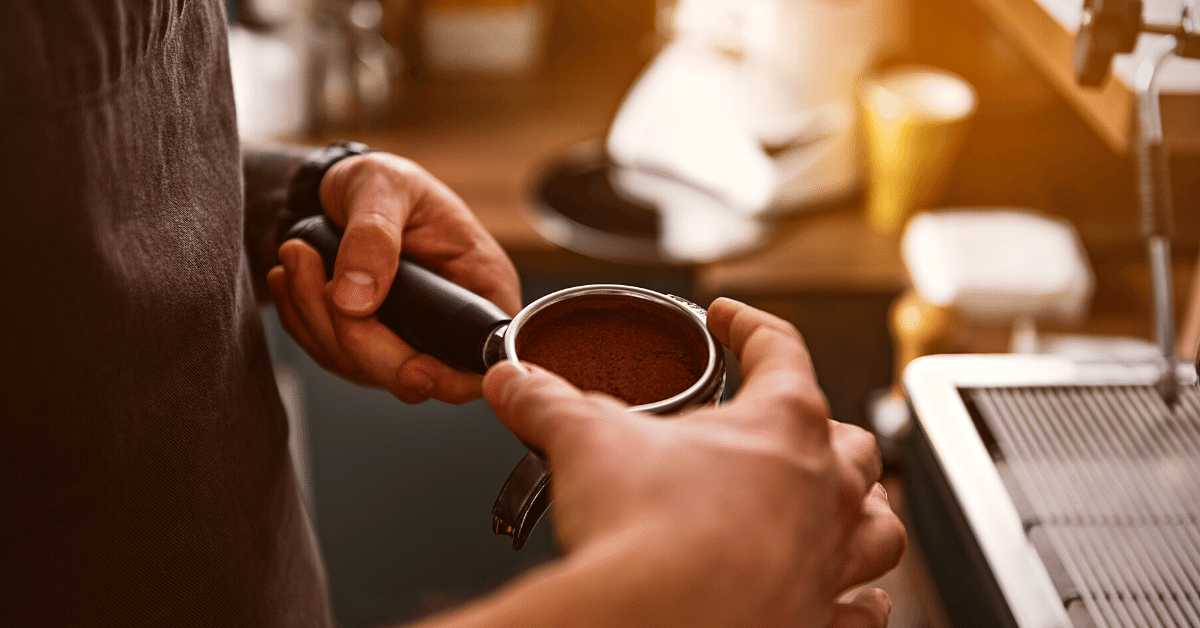
Non-pressurized portafilters are simply harder to use.
Your espresso can’t hide behind the basket. If your grind is too coarse or you tamp too light, you’ll get a bad shot of espresso.
With bottomless baskets, your grinder becomes very important. You need a grinder that is capable of very fine grind sizes that most consumer grinders can’t produce.
Pressurized portafilters are more forgiving.
If you grind too coarse or tamp too light, the pressurized basket will help make up for a lot of those mistakes.
Dual-walled portafilters are aimed at consumers who don’t have the best grinders. Or those who don’t necessarily know how to change grind sizes to get better results.
You can also use a wider range of coffees with a pressurized portafilter. From pre-ground coffee to freshly ground specialty coffee, you’ll get the same results.
IN A NUTSHELL
Pressurized portafilters are more forgiving and beginner-friendly. They make up for a lot of mistakes made in the preparation process. Non-pressurized filters are harder to use but are capable of much better results. There’s nowhere to hide a bad grind, or light tamp in a bottomless basket.
How easy are they to use?
As I mentioned above, pressurized filters are easier to use. After all, you’ll find pressurized baskets mostly on lower-end consumer espresso machines.
Bottomless filters are harder to use.
You’ll usually find them as a separate accessory to consumer machines. Or standard on high-end or commercial espresso machines.
But when should you choose one over the other?
Go with a pressurized basket if:
- You want to use pre-ground coffee
- You don’t have a grinder capable of super fine espresso grinds
- You don’t have a basic understanding of espresso extraction (and don’t want to spend time practicing)
- You have a beginner-style espresso machine that can’t produce enough pressure
Upgrade to a non-pressurized basket if:
- You want to achieve better espresso at home
- You have a good grinder capable of grinding fine enough for espresso
- You have espresso training (or are willing to learn and make mistakes along the way)
- You have an espresso machine that produces enough pressure for espresso extraction
BOTTOM LINE
Think of pressurized baskets as a first step in becoming an at-home barista. It’s like brewing espresso with training wheels. Upgrade to a bottomless filter once you have consistent results. But you’ll also need to upgrade your grinder.
FAQs About Pressurized Vs Non Pressurized Portafilter
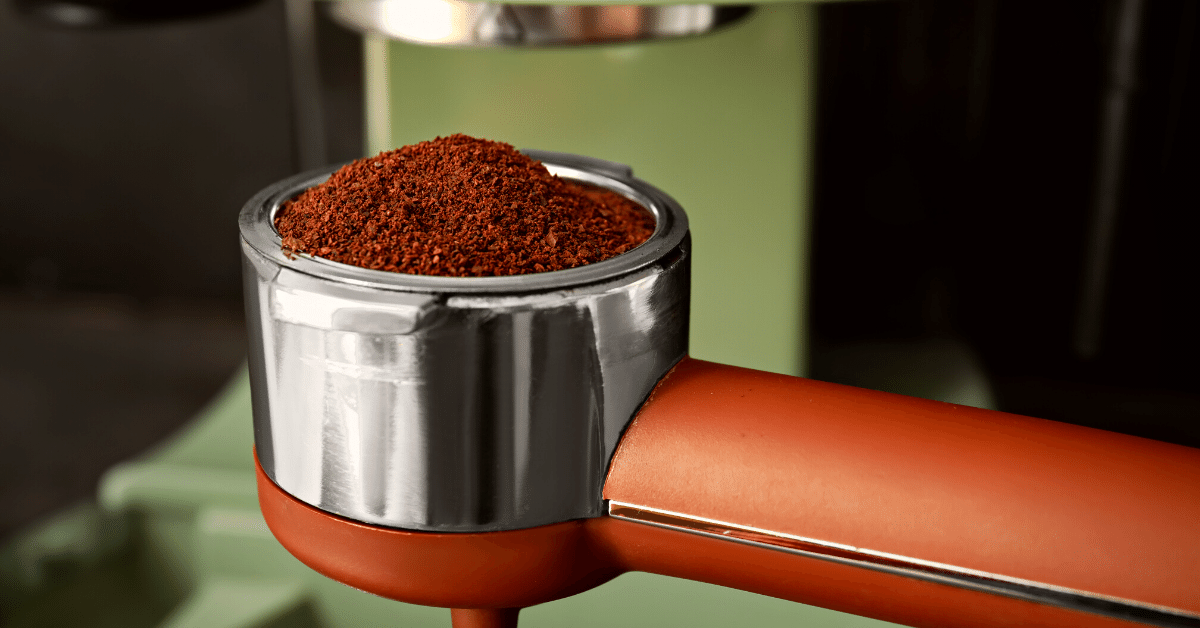
Can I use a pressurized basket with a bottomless portafilter?
As long as your portafilter has a removable basket, you can.
You have to make sure your portafilter has a removable basket. Also, check that you have the same sized pressurized basket as you do the portafilter.
Do you tamp a pressurized portafilter?
You can, but don’t necessarily need to.
Pressurized portafilters make up for bad tamping by building pressure between the screens.
How do you clean a pressurized espresso basket?
Here’s a simple way to clean a pressurized espresso basket:
1. Soak everything in warm soapy water.
2. Scrub and rinse.
3. Pull a shot of water through your basket.
My Final Thoughts
Pressurized portafilters are also called double-walled portafilters. They are beginner-friendly and use dual screens to build pressure for espresso.
Non-pressurized portafilters have only one screen. They need some knowledge of espresso extraction to get the best results.
I’d recommend a pressurized basket to a casual espresso drinker who wants an easy espresso.
But use a bottomless basket if you have some espresso knowledge or want to learn.
Looking for your first espresso machine? Check out our article on the best espresso machine for beginners!

